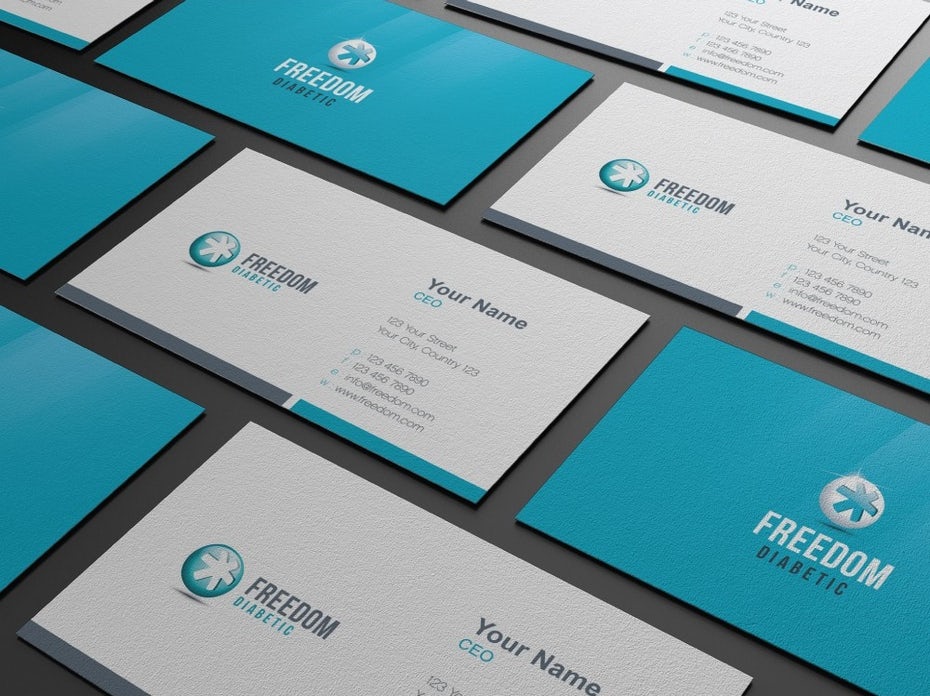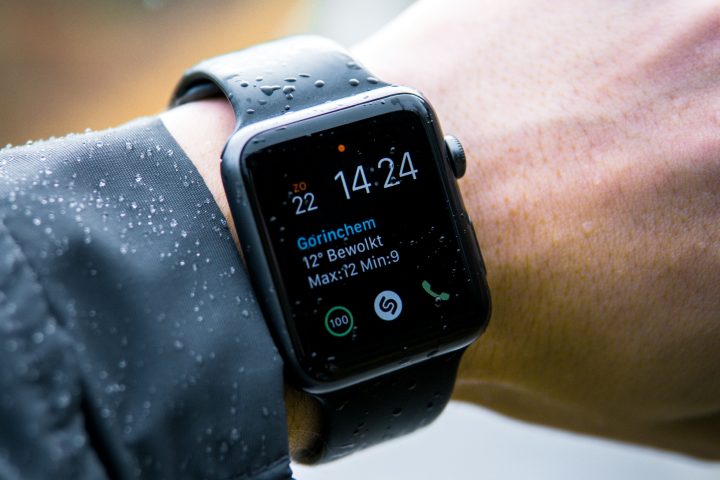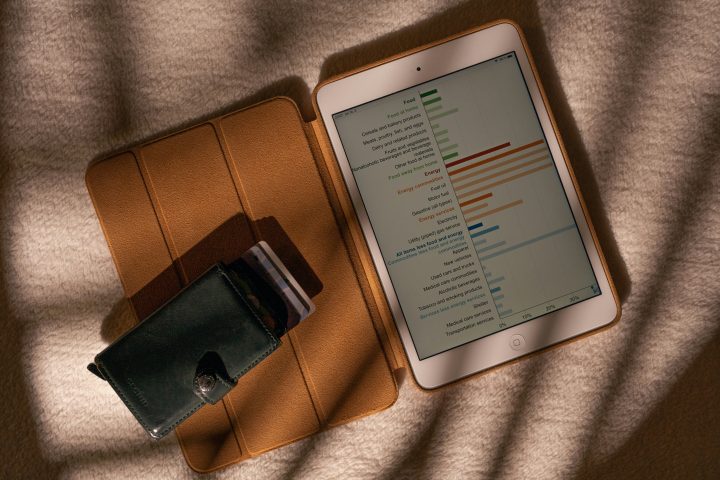Printing your business card not only saves money but allows you to represent your business in the best possible ways. It’s not just a card; it is the first impression of your skills and business and thus a great marketing tool.
However, printing cards manually is a cumbersome process. You may get them printed by local printing shops, but this will cost you time and money. Not to mention, you will not be able to have as many cards made as you require to create a buzz around your company.
With a business card printer, you can have your business cards in a flash. The best thing is that you can have as many as you like without having to spend extra cash and time getting them printed by shops. Also, these machines allow you to design your card in any way you like.
You can incorporate your business logo in the design and add special touches that may be more elaborate, more appealing for the clients and attract them instantly.
Be it a small design tweak or a complete overhaul, a business card printer allows you to adjust the card details to suit the needs of your target audience.
How to pick the right Business Card Printer Machines?
As you read on, you will learn everything you need to know before buying a printer. You will also find out about the various types of printer available in the market.
For a clearer picture of the printer you should go for, look at its strengths and weaknesses. You should base your choice on your business needs for the cards.
Depending on your requirements, you may have a few or a lot of the cards; you may print on a regular basis or not so often. Therefore, you should look at the following before making a final decision:
Printing speed
Before going for a printer, look at its maximum speed of printing. If you want to print cards within a few minutes, you should go for a machine with a fast maximum speed. It should be able to print at least 50 cards per minute.
Maximum resolution
You must factor in the resolution when you purchase a printer. It should at least have 300 x 300dpi, though higher resolution models are available in the market.
Media support
This is one of the crucial factors when you shop for a printer. Ensure you pick a printer that supports all the media you need for your business. There are printers that support plain paper, paper with adhesive backing, cards of different sizes and even photo sheets.
Standard media sizes to look for
There are three common standard sizes for cards. It should be easy to insert these media in your printer.
- Standard Credit card size: 2.125″ x 3.375″
- Standard Business card size: 2.125″ x 3.5″
- Standard Trading card size: 1.5″ x 2.5″
Ink / toner
Another important aspect you must look into is the ink and toner used in the printer. It should be easy to replace the cartridges in the machine.
Ink and toner are different; the former is the liquid and the latter is the powder. You can get these items cheap from online stores or shops.
Units per cartridge
When you are operating a small business, the more the units per cartri dge, the better the value for money. However, larger the number of units per cartridge, the lesser number of pages it prints.
There are printers that allow you to swap a single cartridge for several, giving you the higher page counts.
Speed of printing black
Look at the speed of printing black, first. Consider all the other factors later. The office printer should be able to print black letter quality (letter quality at 10 or 12 typescript) for at least seven pages per minute.
Speed of printing coloured
When you look at the speed of printing colours, the speed at which the printer can print two colour graphics of 150 DPI should be considered.
Automatic documents feeder (ADF)
This is the feed tray that holds the paper in a piece when you are printing multiple copies of the same document. It should allow the printer to print up to 10 pages per minute.
Printing method
There are two methods of printing. The first is the direct thermal printing and the second is the thermal transfer printing.
It is more durable in long run but costs more than the direct thermal printing. The latter, on the other hand, is cheaper but wears off fast.
Paper handling
As you definitely need more than one paper tray, you should get a printer that has one or two. It should also be easily accessible and of high capacity to print larger batches of cards at a go.
Built-in auto card cutter
While shopping for the right printer for your business cards, look for a printer that allows you to preview the cards, print your design and cut cards in one go. You should be able to edit the cards, too.
Paper size
The business card size varies from company to company. Some prefer the standard credit card size while some prefer the mini cards. These machines should also suit different formats.
Designing utilities
It should be easy to make changes to the design. You should be able to add shapes, text, images, graphics and other such elements.
Price
This is a minor factor, but you should consider it if you are low on budget and want value for money. These printers aren’t expensive and despite the cheaper models being basic in functionality, you can get a value for money printer if you think about the long run.
What are the different types of Business Card Printer Machines?
There are two types of printers: the label and the thermal transfer printer. The former differs from the latter on the printing procedure used.
Label printers generally print on plain paper or paper with an adhesive backing. It uses thermal transfer printing technique. Once the designing is done on a computer, the card details are printed on plain paper.
Then the print is laminated on to the backing paper. It is fed into the printer. Printing is done by making use of the heated rollers that transfer the ink from the ribbon to the card details.
The drop-on-demand technology is also used in thermal transfer printers. The printer needs to be connected to a computer. It is generally affordable and available on all budget ranges.
The card is pulled into the printer at each print.
The thermal wax transfer printer works slightly differently. The first step is same as with the label printers. The design is created on a computer.
Then the image is printed on a wax paper using a thermal wax printer. A card is then printed using the same Printer and the wax transferred to it.
You may find label printers cheaper as you can print on light porous paper. Thermal transfer printers are expensive because the ribbons are expensive.
More expensive but durable; these printers are great if you print large batches of cards or want to print more frequently.
Business card – finishing options
Business cards have been around since the 19th century. It is often recommended to use new and unique methods of presentation – something unusual.
However, it is always good to stick to the conventional options to give your business that professional and sincere touch.
Business card – Die cutting
Die cutting is a method of producing a part or all of the business card from the same sheet of paper.
It is also called laser cutting method. In this method, a machine runs through the paper and cuts a part of it into a shape.
You can also get a cutter to cut the cards manually. Shapes on the card can be round, square, rectangle, oval, triangle, and more.
These cards are preferred by those who want something different, professional and new.
Business card – Embossing
This is a method of giving a three-dimensional image to the cards. It makes the card appear like a medal.
Sharp tools slightly tear the card surface that pushes the card paper into the creases to give it a crease texture. It gives the cards a professional outlook. It is recommended to use it in a professional environment.
Business card – Emboss finesse
A classier method used to craft sophisticated cards, Emboss finesse is unique in the way that the ink texture is printed by the use of ridges on the paper and then the paper is cut in a V form, giving it a lifting effect.
The creases look like small overlapping roof tiles. It gives a translucent, smooth and glossy look. It comes in various colours and it is used for different agreements and signatures. It is more expensive than the common business cards.
Business card – Hot foil stamping
It is a method of printing by which the cards are printed and then small, thin coats are applied on the card. When the paper heats later, it leaves behind swanky, shiny areas.
It is very common and comes in different colours. It is expensive and recommended for presenting a professional look.
Business card – Spot UV
This is similar to hot foil stamping but it is more glossy and better dimensional. It is more expensive than other finishing methods.
Business card – Guillotino
This is a special type of paper cutting method. It uses paper with no stretch that has been tightly attached to the card. Then in the centre, the paper is cut to form two sides.
It leaves a V opening. It is more expensive, and therefore, it is used on special occasions.
Business card – Letterpress
Letterpress is a traditional method of printing used during the nineteenth century. This is similar to embossing. It uses ink to cover the surface of the paper that leaves behind beautiful patterns when pressed.
In modern times, you can get letterpress printed using computer printers. It is less expensive than the traditional method. It offers an elegant touch to your card.
Business card – Screen printing
It is a method of applying a design in an ink-resistant substance. This way you get a design with minimal touching of the paper for a print to be applied.
It is less expensive than other methods. It is often used for more than one colour printing. It is more common among the low-cost printers. It is a more common option in the printing world.
Business card – Full-bleed printing
It is a method of printing the whole design on the paper from top to bottom and side to side. There is no limit to printing it. It is a popular option for people who love printing and designing.
Business card – Spot colour printing
It is a type of printing in which only one ink colour is used for printing. The other colours are produced by mixing the ink with the white ink. It is popular for printing photos.
Business card – Text only printing
Text only business cards are used for promo codes or coupons. They appear more professional for people working in specific fields.
It gives a professional touch for the cards. It is trendy in the printing industry.
Business card – Double sided business card printing
It means that the details will be printed on both sides of the card. It gives more space to write. It is very popular with some unique styles and colours.
Business card – Frame cutting
This is an art form that revolves around the artwork and the effects it has to the card. There are different kinds of frames that can be used.
The outlines of these frames are cut from the card. It is commonly used in cards that carry a picture or a logo. It is very classy and is commonly used by artists, designers, photo editors, etc.
Business card – Rounded corners
Rounding of the card is an interesting idea that leaves an impression of a lifestyle and an experience. It is common among the theatre artists and film-makers.
It is more common to the artistic and creative people. It is available in different colours. The card is printed with a double size and the corners are then cut off to form a circular shape.










